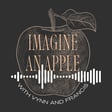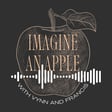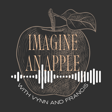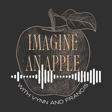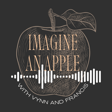
Navigating a city with Anna
When you navigate a city, what is your inner experience? Do you see detailed overhead maps, or street-level views of landmarks, or neither?
Vynn Suren and Francis Irving interview Anna about how she uses her imagination to find routes, program a computer and remember names.
Anna describes how she sees both an overhead map view and street-level views of landmarks. She switches between them dynamically.
What’s a visual map vs a spatial map? What features are salient? What is a waypoint? How do the imagined maps vary in quality between different cities? What does the marker look like that shows where you are? There’s then a discussion about how people work out the route to take on the map, and what happens when they get lost. What’s the inner experience of being lost? How do you find yourself again?
The conversation switches to use of imagination while computer programming. Anna describes the abstract concepts she sees in a spatial structure. What then happens when you’re interrupted? Does this apply to other tasks, e.g. getting quotes for insurance?
To wrap up, the team talk about names and faces and how well people remember them. If you visualise writing is it serif or sans-serif, is it white or grey?
Timestamps:
00:55 Imagine an apple
02:17 Inner background music
05:00 Navigating a city
08:26 Spatial vs visual
11:07 Finding the best route
20:17 Typical waypoints
22:49 Sense of direction
26:33 Getting lost
30:18 Variety of experience while navigating
34:08 Imagination while computer programming
38:56 Interruptions
41:02 Smoky grey shapes of thinking
44:35 Inner experience during collaborative tasks
46:29 Remembering names and faces
Show Links:
- This isn’t f***ing Dalston! - mapping the cognitive boundaries of part of London
- The Image of the City - book about how people make mental maps
- Mind’s Eye Mentorship - 1:1 coaching, used to be called AphantasiaMeow
- Guugu Yimithirr language - uses north/south where English uses left/right
- Country Driving by Peter Hessler - getting lost in rural China
- Statistics of mental imagery by Francis Galton - either this, or William James referencing it, mentions the smokey grey shapes
- 1946 birth cohort study - NHS research project
Contact Details:
Please follow us, get in touch, tell us about your inner experiences!
Twitter: @imagine_apple @SurenVynn @frabcus
Email: imagine@flourish.org
Theme written, performed and recorded by @MJPiercello
